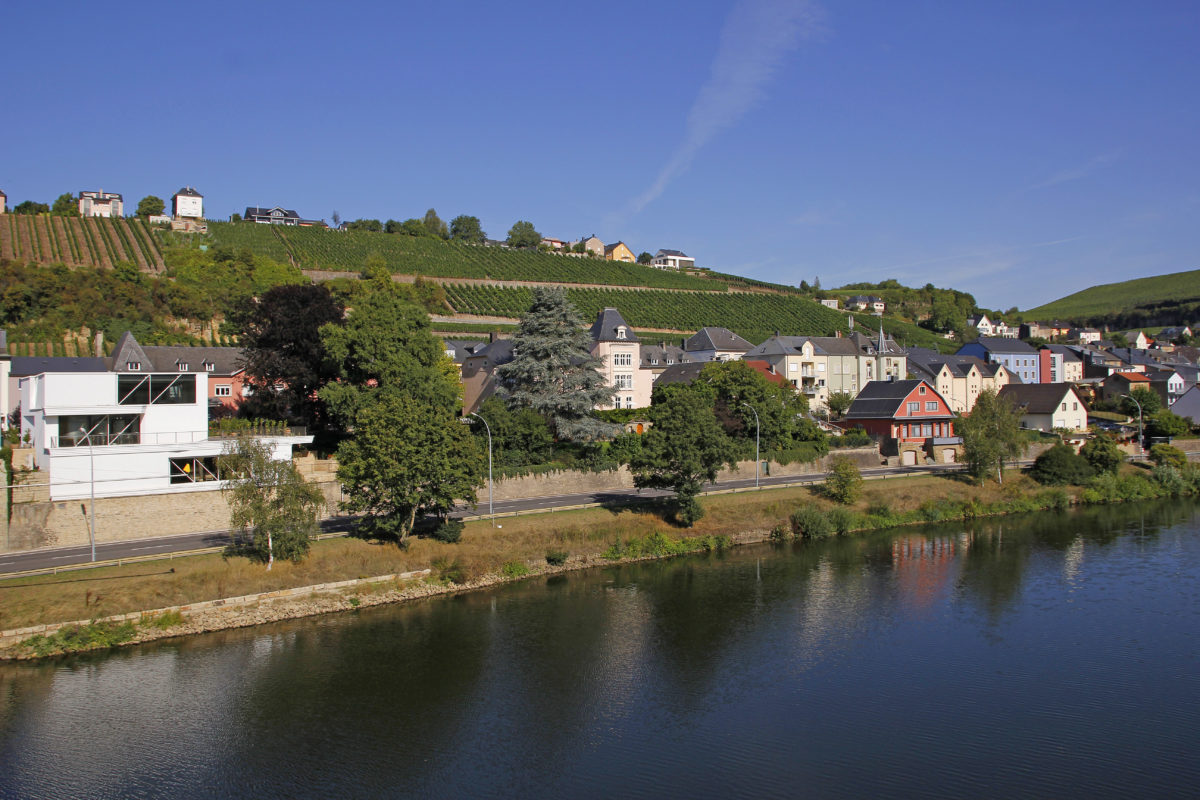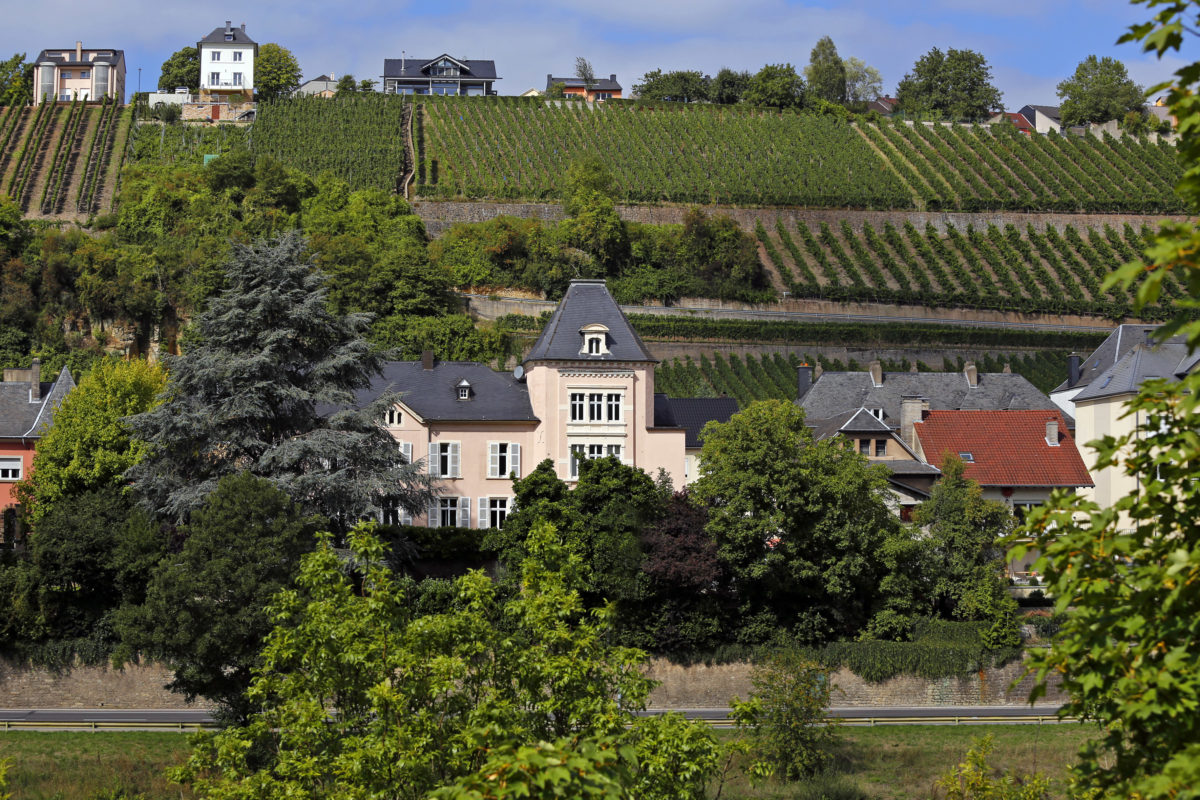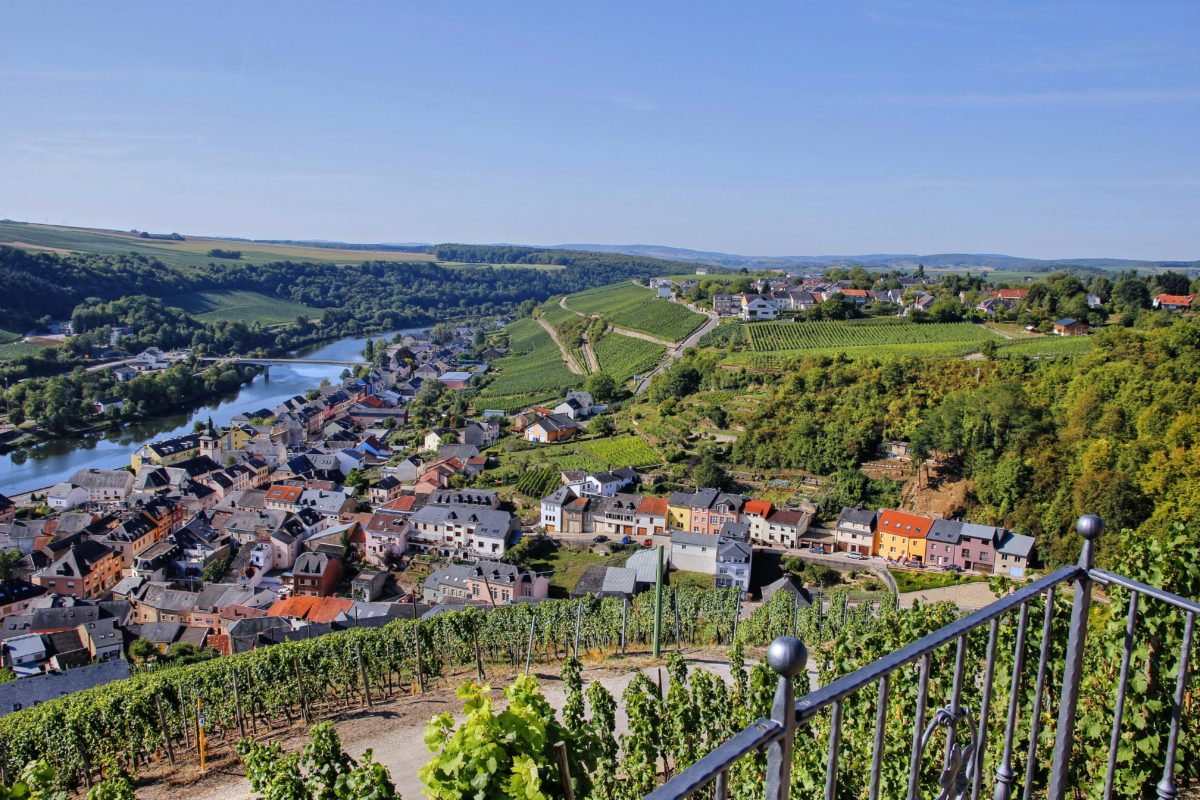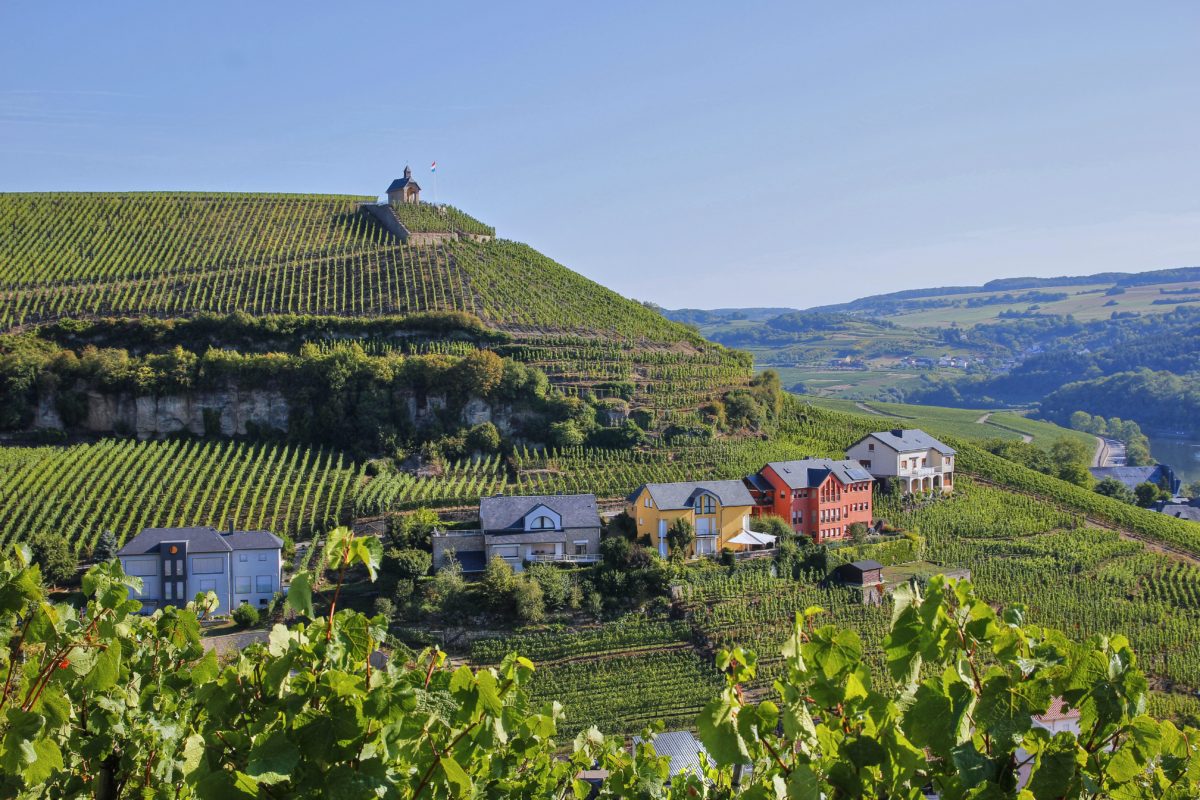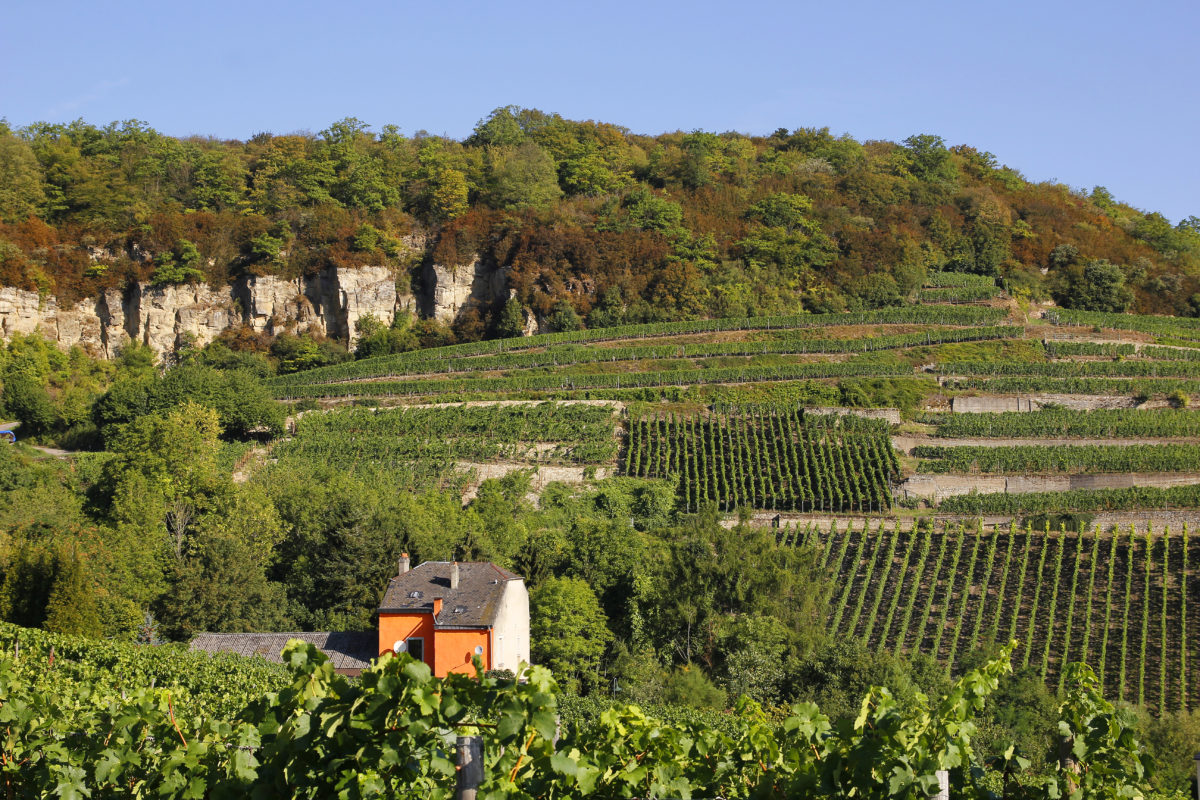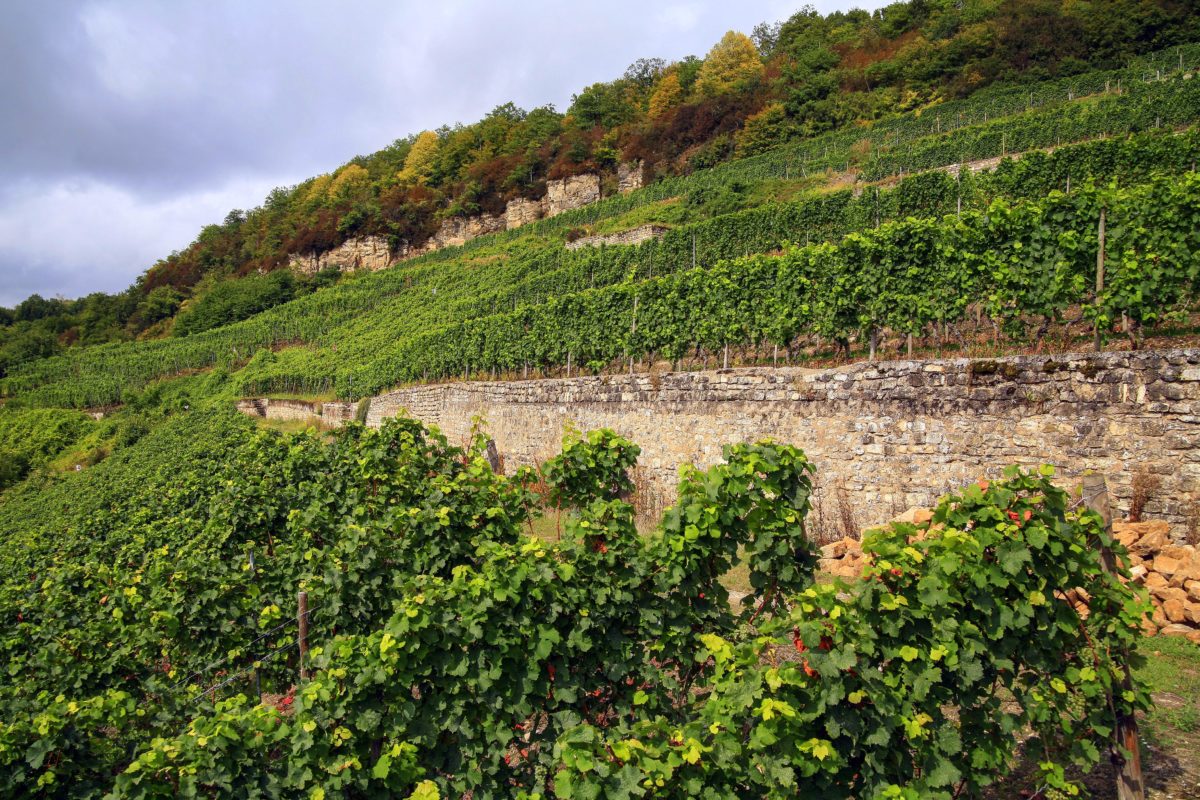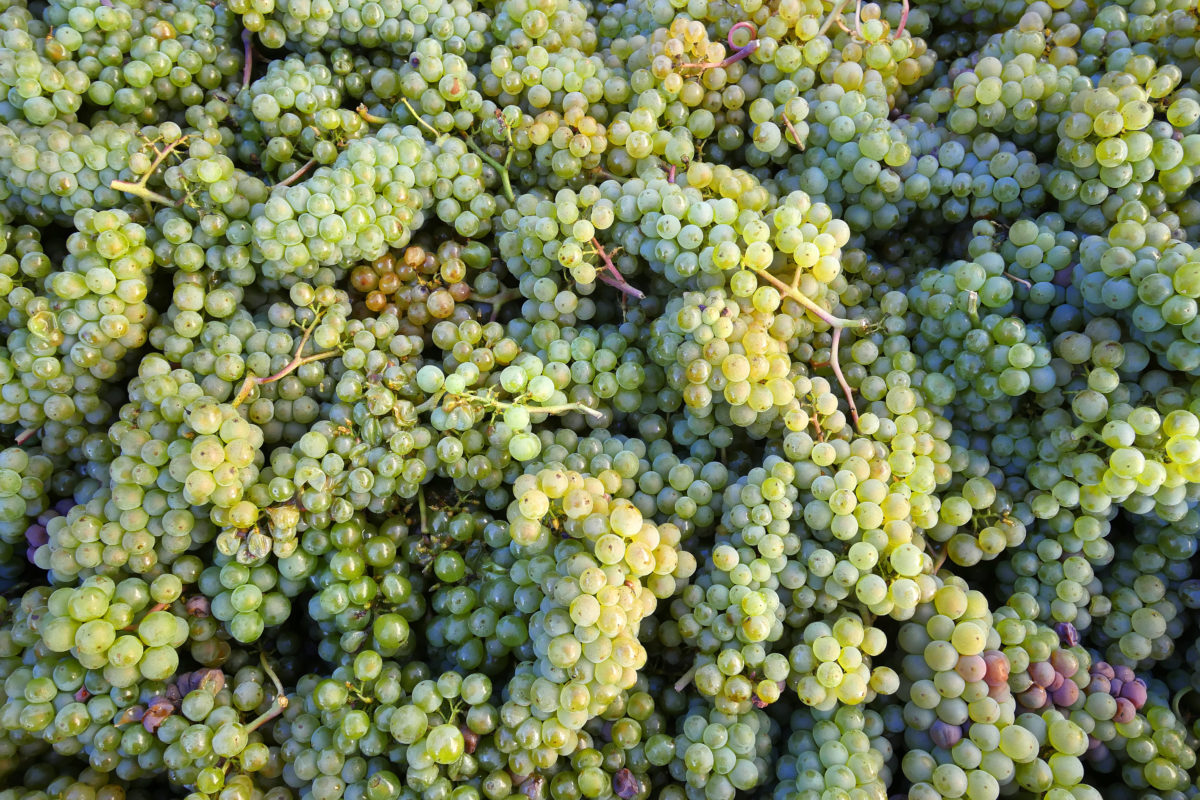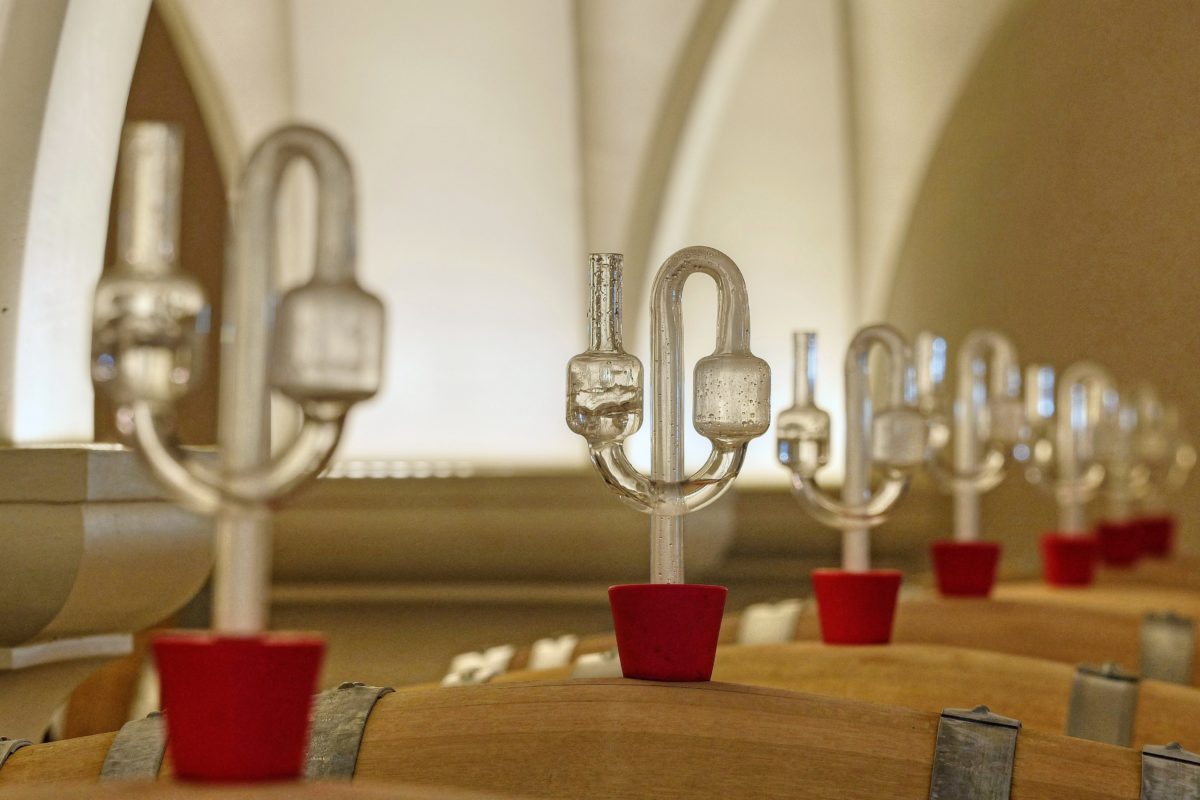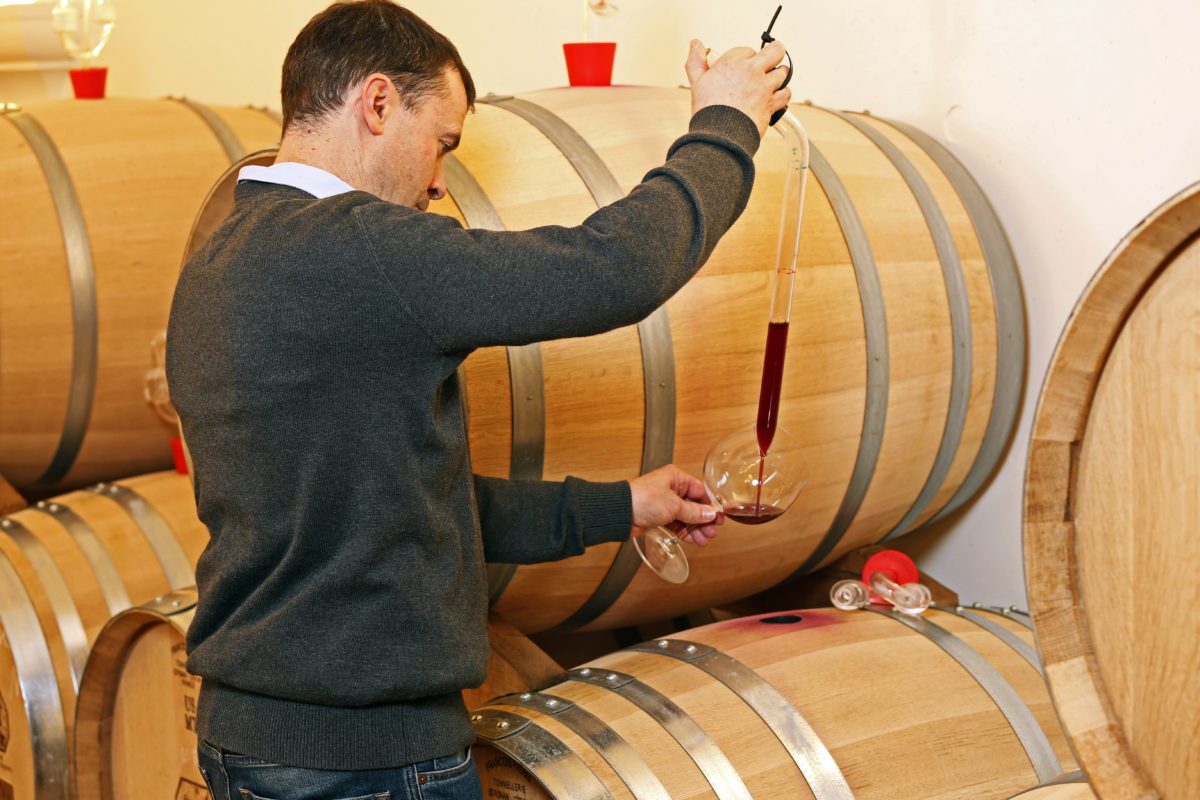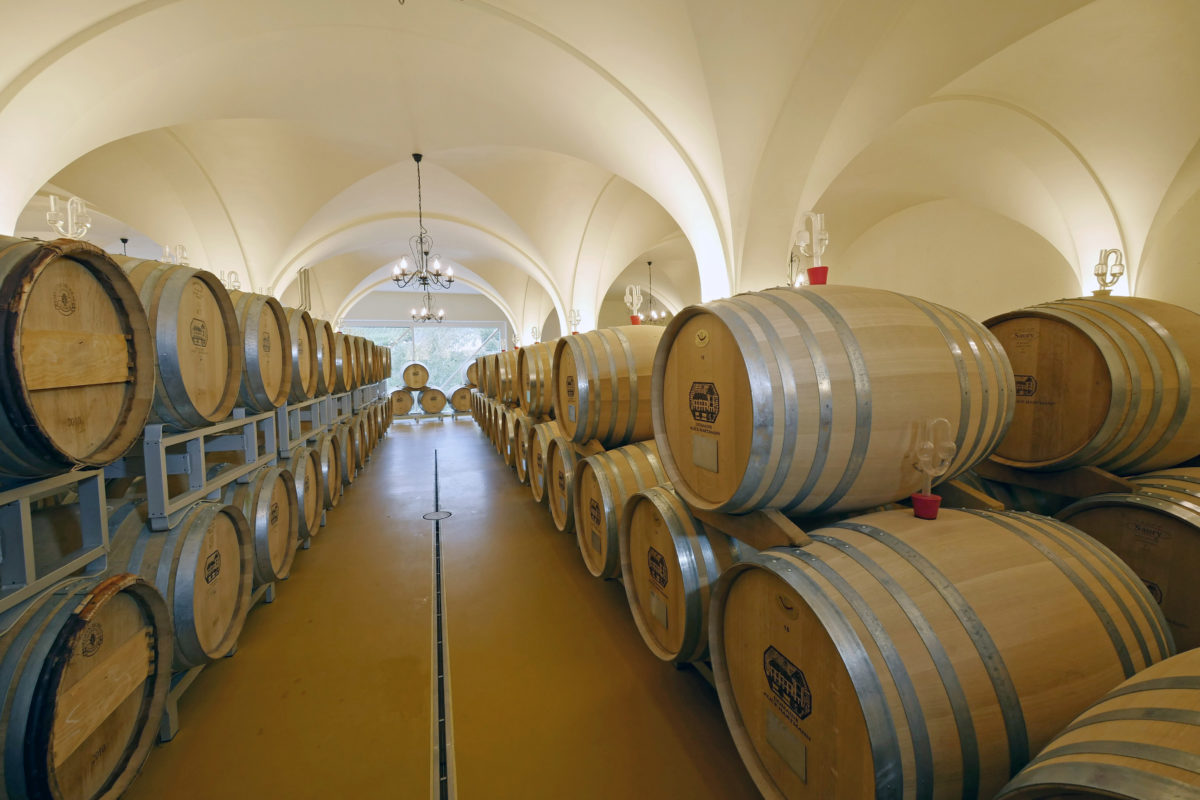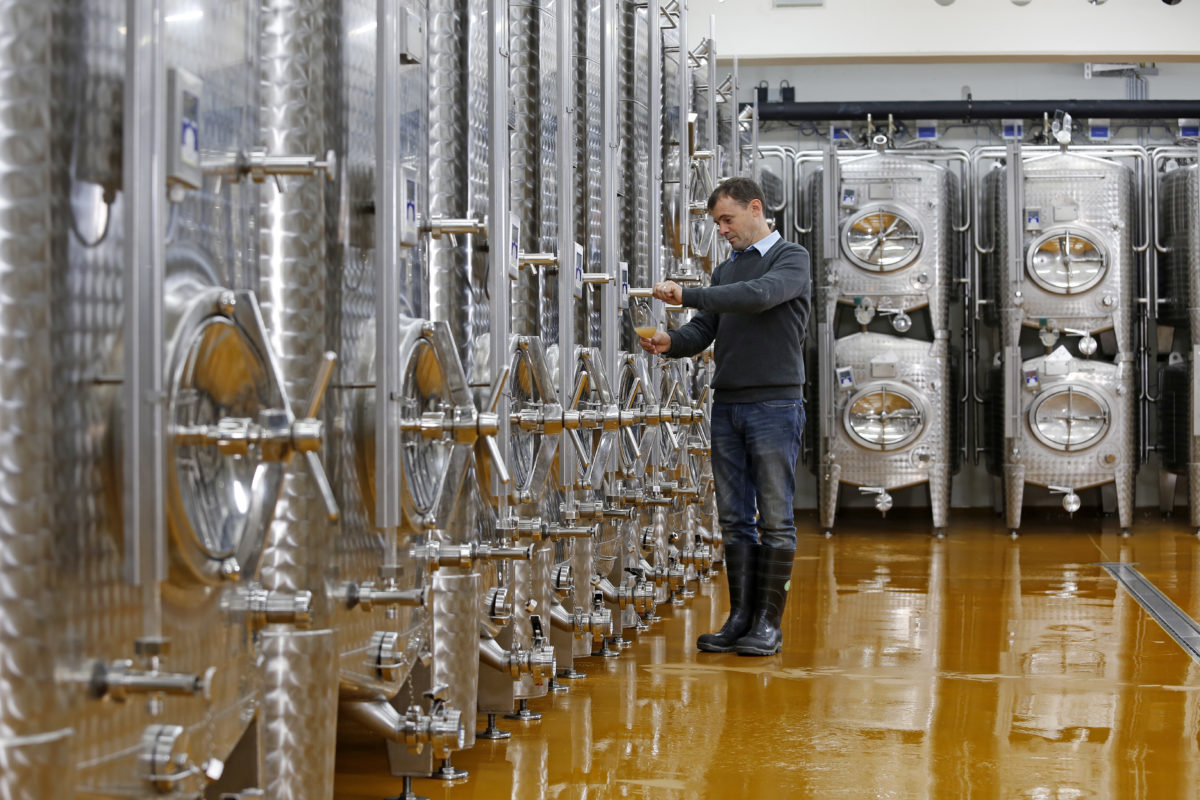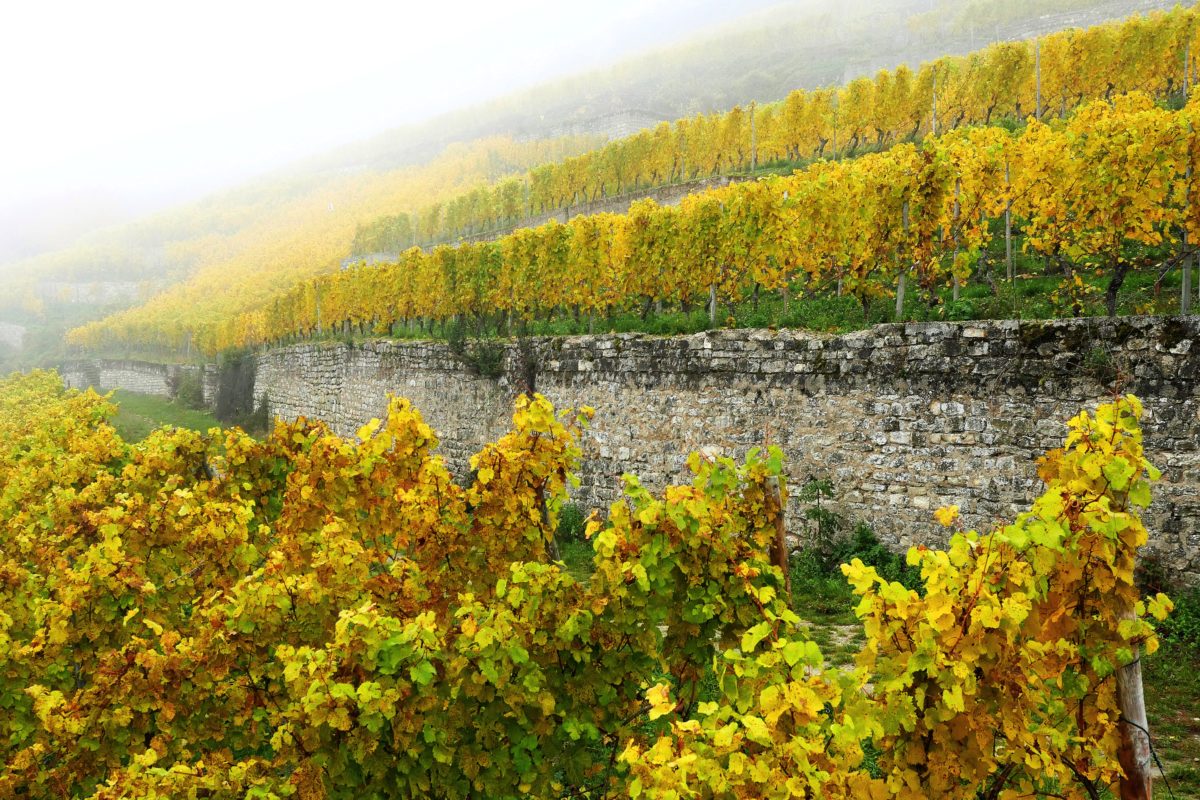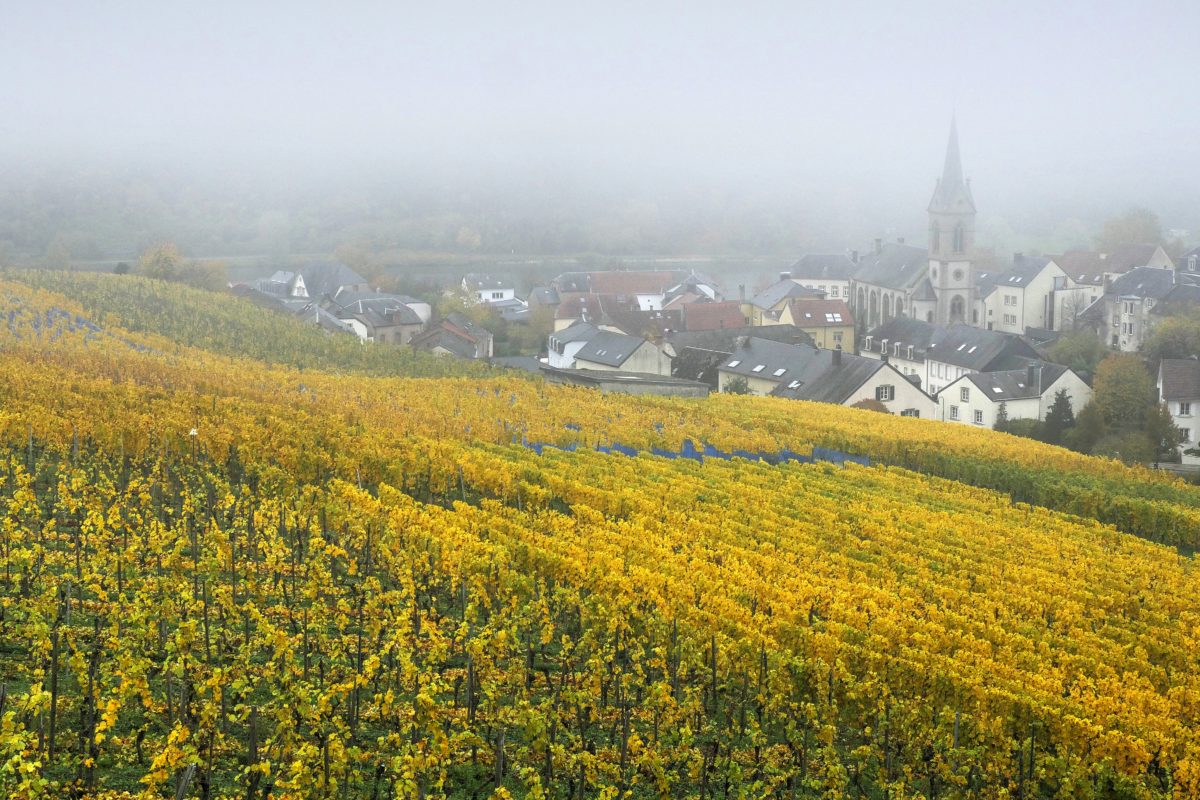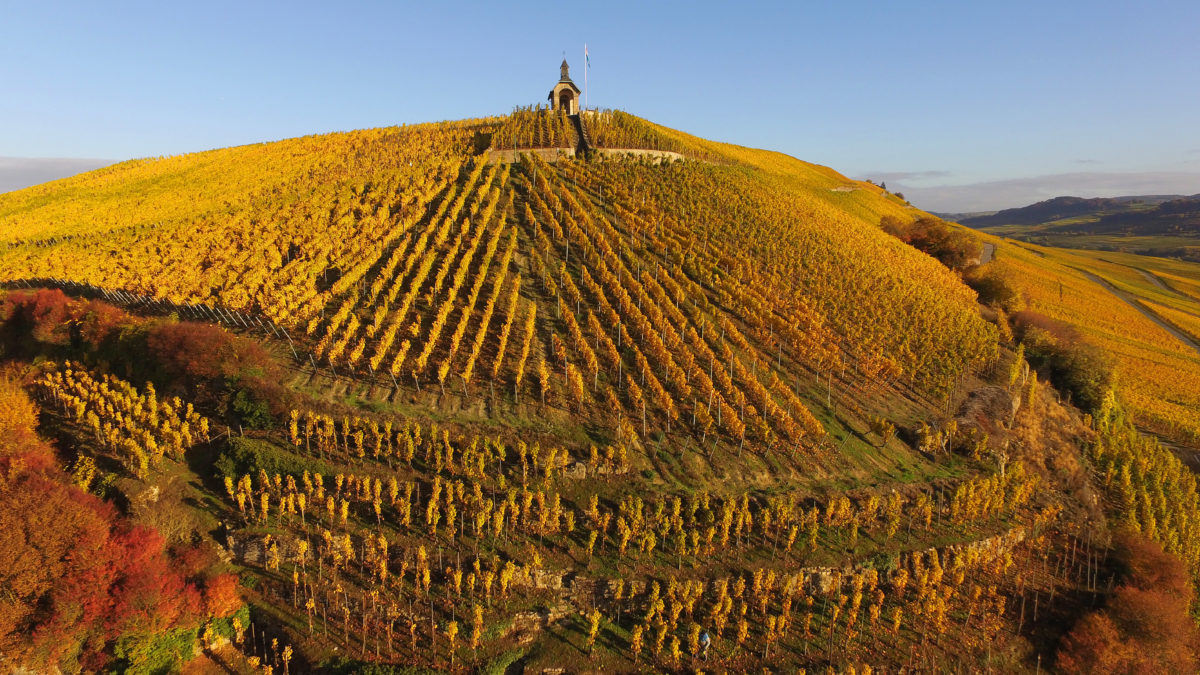Riesling’s best-kept secret
We’re on the Mosel, where the vineyards are steep, stony suntraps, the vines old, and the grape riesling. But this is not Germany, it’s Luxembourg — one of the best-kept secrets for world-class riesling. Here it’s not slate but shell limestone that is paramount. The fossilized marine-based soils are more like those of Chablis or Champagne and translate into supremely elegant, classically styled dry rieslings: intensely mineral, with calibrated balance and stunning length. The 200-year-old Domaine Alice Hartmann is named for the valiant Mme. Hartmann, who single-handedly kept the estate alive through war and lean times in the last century. The domaine has holdings in some of Luxembourg’s most treasured vineyards: the Wormeldange Koeppchen, Palmberg in Ahn, and Fels in Grevenmacher. The focus is on farming these parcels of old-vine riesling (the oldest planted around 1928) without herbicides or pesticides, harvesting by hand, and favoring low yields, spontaneous fermentations, lees aging, and very little added SO2. Understandably, Luxembourgers do their best to keep these wines to themselves. We’re thrilled to be introducing two superb examples from Domaine Alice Hartmann here in the U.S.
Mme. Hartmann
Historically, the Upper Mosel, as the stretch of river between Konz and Perl (on the better-known German side) is known, was the land of elbling. By the end of World War I, a confluence of historical, political, and economic factors had shriveled markets for the high-acid grape. Rivaner (a.k.a. müller-thurgau) and a handful of other varieties replaced elbling as growers shifted their focus from export to local consumption. Domaine Alice Hartmann was early to recognize that riesling is superbly suited to the region’s Saar-like coolness, limestone soils, and long growing season. For decades now the domaine has been cultivating some of the variety’s most serious expressions. Though the domaine was founded more than 200 years ago, little is known about its early history. We do know that in 1920, Alice Hartmann and her husband purchased the property and that Mme. Hartmann was widowed soon afterward but valiantly fought to keep it running through the perils and privations of World War II. Although the circumstances of just how she did this remain intriguingly shrouded, her ultimate triumph was in turning the domaine into something unique in Luxembourg by focusing solely on riesling grown on a trio of extraordinary sites.
After Mme. Hartmann’s death in the 1980s, her nephew took over the domaine, but in 1996, he sold it to current owners Pierre Wesner and Jean Godard, both from winemaking families. Wesner and Godard recognized the intrinsic and historic value of the Hartmann holdings, and set about modernizing the winery and raising the level of winemaking to match the superlative vineyards. Cellar master Hans-Jörg Befort, who comes from just across the Mosel in Nittel, Germany and studied winemaking in Weinsberg, has been at the domaine since 2000 and is now fully realizing the vineyards’ potential. “From the outset,” explains Pierre’s son Jos, “our philosophy in the vineyards was to reduce yields, thereby vastly improving the quality of the grapes — late harvested, selectively hand-picked grapes. Most of our riesling grows on very steep or old terraced vineyard sites ensuring optimal exposure to the sun, super drainage, and ripe fruit.”
Of shell limestone and old vines
Luxembourg’s vineyards are concentrated in the eastern part of this tiny country, where the Mosel forms a natural border with Germany. There is just one AOC: Moselle Luxembourgeois. It’s only a half-hour drive from the Saar to Wormeldange, where the domaine is located, but the geology and topography couldn’t be more different. Here the Mosel cuts a wide swath through low, rolling green hills and along steep cliffs of Muschelkalk, or shell limestone. The domaine owns 18 hectares, including parcels in the legendary Fels, Palmberg, and Koeppchen. The sites in Fels and Palmberg are both on south-facing, terraced slopes that overlook the Mosel, with vines averaging 50 years old. While Fels is shielded by a limestone escarpment to the west and dense forest to the south, Palmberg is higher on the slope and sheltered by a cliff to the north. Its soil is rockier than that of Fels, hence its name, “Sous la Rocher,” or “under the rock.”
This limestone terroir gives extraordinary dry, mineral, long-lived rieslings with etched acidity, intensity, and finesse — think of Rheinhessen’s Westhofener Kirchspiel or the Pfalz’s Kallstadter Saumagen. Jos notes that, relative to the mid-Mosel, “since the valleys are less steep and more ‘open,’ we have more rain, but also more wind blowing through the valley, which helps to dry the vines and soils quicker.” Farming is done without pesticides or herbicides, harvests are manual, and everything is kept “in close touch with nature.” In the cellar, Befort favors spontaneous fermentations, vinification in temperature-controlled stainless steel, and extended elevage in wood, with SO2 “used in very small amounts.” After bottling, the wines are ready for drinking, although Jos suggests two years of bottle aging. In the past, rieslings from this AOC were often characterized by what Jancis Robinson called “a stately aging curve.” This may have tried the patience of a younger generation of wine lovers, but Robinson points out that producers here have refined their understanding of what riesling can do on this terroir and are now making earlier-drinking wines that lose nothing of their balance and longevity.

